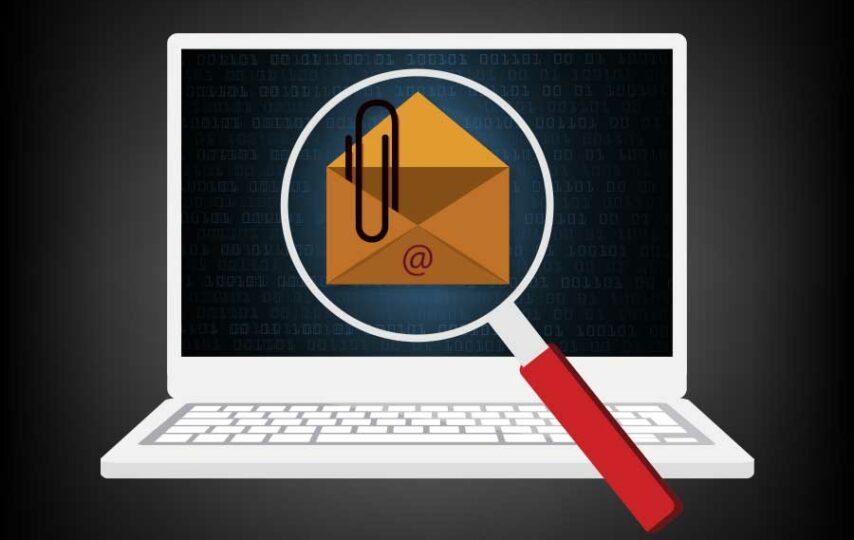Even with social media taking charge of modern digital communication, emails are still a reliable method for formal communication.
So, malicious individuals send endless phishing campaigns, either targeting randomly or preselected groups. Today, their tactics focus on sending attachments that can cause harm to your system or steal your data. Considering that, here is a guide on what email attachments users should think twice before opening.
Signs That You’ve Received a Harmful Email
Email from scammers and hackers often possess a few telltale signs that can help you detect their intentions. Those include the following.
A Sense of Urgency or Exclusivity
Usually, scammers don’t want you to read into the information too much; otherwise, you can determine that it’s a phishing attempt. Thus, such emails are written to persuade the average user to download an attachment or visit a link as quickly as possible. It often goes along the lines of “only valid for the next 30 minutes” or “your lucky offer expires soon.”
No genuine organization is ever in a hurry of people taking up offers that harm their bottom line. That’s why most coupons have an expiry date of at least several days. Scare tactics are also highly dangerous as they might trigger fear in people. And that could make them more inclined to open files or links.
Improper Grammar
Hackers don’t hire professional proofreaders that check every email that goes out. So, most of them have spelling and grammar errors, which would be a professional embarrassment for any other organization.
Lack of Official Credentials
When emailing their targets, scammers don’t want to leave a traceable digital trail. That’s why they often avail of free account services instead of purchasing a domain, which requires businesses to submit verifiable information. Therefore, you should watch out for emails you receive from Gmail or Outlook accounts instead of organization names.
Email Attachments That You Must Watch Out For
Several file types can harbor ransomware or trojan packets. A few that warrant substantial caution include the following.
ISO Files
ISO files are used to replicate the disk drives. Therefore, hackers can use them to store high-density trojan files that you won’t detect until it’s too late. Most users don’t usually have the software to read their contents, which blocks weaker firewalls from marking them as threats.
Executable Files
A .exe file can execute its function without any input from the user, making them the ideal delivery mechanism for nasty malware that can lock your computer right after the download concludes. Although your PC notifies you that the program is trying to gain access to critical systems, it can be challenging for less aware users to understand during the first go.
Zipped Folders
People often compress files to fit the size requirements of email services. Yet, it’s a convenient way for hackers to access your PC, as they can compress the folder to send any nefarious files undetected.
Word Documents
While you can download any work attachments from your co-workers without worry, those sent by unknown sources may conceal malware. A skilled hacker can hide a nasty virus within a .pdf, .docx, or .xls file. It is more concerning that those packets can be executed when you open the file with Microsoft Office. So, the antivirus may treat MS Office as the primary culprit instead of the file itself. So, even a Word document could be hiding dangerous content.
Installers
Perhaps the most malicious attachments of them all, installers comprise the ultimate red flag that the email is not genuine. Think about it, why would someone who doesn’t know you would send you an entire installer package instead of linking a website or cloud storage?
Unlike .exe files, installer packages can remain dormant unless you execute them yourself. While they often have valuable files, scammers can hide trackers within them that relay your personal data to them.
How to Protect Against Hazardous Emails
If you believe an email may have harmful attachments, you can use the measures mentioned below to secure them.
Examine the Sender’s Credentials
Whenever you receive a suspicious email, observe the credentials and metadata first. You can check the sender’s email address to check whether they’re from genuine sources. If you receive an email regarding a free pack of Norton antivirus, it should not be from ‘norton549@gmail.com.’
Use an Encrypted Email Service
Any encrypted email service verifies all files before sending them as attachments. Thus, using such a platform ensures that you don’t receive files that can harm your system.
Install a VPN
Whenever you use your email through unsecured Wi-Fi, there is a possibility of hackers intercepting your emails. You can solve the issue by using a Virtual Private Network (VPN) that encrypts all inbound and outbound packets from the internet. Thus, a VPN for Windows could protect you from someone attempting to intercept your communications.
Scan All Downloaded Attachments Before Opening
Regardless of your OS, there should be an antivirus active on your system to scan all downloaded attachments. It not only looks at the nature of the file but can detect any hidden functions without damaging the integrity of the files.
Summary
No matter how far technology progresses, you must exercise a few measures to protect yourself from harm. In the case of what email attachments users should not open, this guide has all the tips you need. While the measures are sound, treating any email as a suspect is always best. You never know when a cybercriminal might compromise someone’s email.








